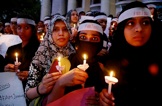A paradoxical country that we love and that we sometimes end up hating,
A country that we can not always understand ...
Talking about India without the plural seems hard, at risk of obscuring its many facets which make its wealth, its attractions, and sometimes turn repellent.
Everyone can see what he has seek, starting with a path to yourself ... and to a multiple reality.
We like, we do not like, we come back, and swear never come back. India does not leave indifferent
-
✴ India is a partchwork of civilizations originally inhabited by the Civilization of the Indus Valley, from the tenth century it has continued to be colonized by Muslim nomads from Central Asia in the sixteenth century by the Mughals, from the eighteenth century by the british, the Portuguese, the French, the Dutch.
-
✴ India is a federal democratic republic of seven territories ruled directly by the Central government and 28 states each headed by a chief minister, accompanied by a Governor. This gives rise to important policy issues.
-
✴ India practice a dozen different religions including 4 origin: Hinduism (80%), Jainism (0.4%), Buddhism (0.6%) Sikhisme (2%) what 's adds imported religions such as Islam (13%) Christianity (2%) Judaism and Zoroastrianism (0.009%). What adds animist practices community, and many sects connected to different gurus ...
Hinduism is divided into several branches according to its pantheon of many deities, Buddhism is divided into different schools in Tibetan majority, with the recent emergence of Japanese Buddhism.
-
✴ India speak 23 official languages recognized by the constitution. It was recorded around 4000 regional languages and dialects.
-
✴ India is a country of castes based on heredity, a hierarchical religious organization, some mutual repulsion, a belief in reincarnation. They are layered from the Brahmins (priests and teachers teachers, but also a wide range of occupations), the Kshatriyas (rulers, administrators, soldiers, employees), Vaishya (craftsmen, traders, businessmen, farmers, shepherds) Sudras (servants), the Untouchables (Pariahs, Dalits, Harijans also called "children of God" by Gandhi) who are all dirty work. The inter-caste marriage become common although still not accepted.
-
✴ India is the land of thousands of cultural communities and ethnic groups, giving rise to a multitude of genres of music and dance, culinary traditions and clothing, and sometimes conflict.
-
✴ India is a star who has given extraordinary films productions: a classic cinema with Satyajit Ray: Lament of the Path, Pather Panchali, Charulata etc ... an author's cinema like Mira Nair: Salaam Bombay, Kama Sutra, the Monsoon Wedding, the Namesake another ... a popular cinema that everyone knows as the Bollywood with some internationally renowned achievements such as Indian Family, Devdas, Lagaan ...
India has also attracted Western directors, the most interesting: The Tiger of Bengal and Hindu Tomb of Fritz Lang,
A Passage to India from David Lean, Indian Nightlife from Alain Courneau Gandhi from Richard Attenbourough,
City of Joy from Roland Joffé, Hanuman from Fred Fougea, Slumdog Millionaire from Danny Boyle, Indian Palace from John Madden, Trishna from Michael Winterbottom, Backwaters from Jag Mundhra. A wonderful film unfortunately little known by European public: The Waiting City from Claire McCarthy, the recent and amazing Lion from Garth Davis
India is a country that does not leave indifferent
A country that we love :
-
๏with Shah Jahan and his Taj Mahal, the Mughals and their palace, Mahama Gandhi and his quiet strength, Vinoba Bhave and his land reform often forgotten, Krishnamurti and his philosophy, Rabîndranâth Tagore and his poetry, Ravi Shankar and Hariprasad Chaurasia and the captivating music, Shah Rukh Khan, Aishwaria Rai, Amitabh Bachchan, Allah Rakha Rahman and their Bollywood cinema.
-
๏India is also the land of Yoga with Sri Tirumalai Krishnamacharya, Swami Shivananda Saraswati, Bharatanatyam, Kathakali, and their codified dance, but also Raghunath Manet and his way to redefine the relationship of the body with sacred, Kama Sutra and his poetry of tenderness, temples of thousands sculptures, sikhs with their turbans, all the women in saree which undulate between heaven and earth with an armful of bracelets, a pot balanced on the head.
-
๏This is still the land of Phoolan Devi, Bandit Queen as she is called, this woman humiliated, flouted, abused by a sexist and elitist environment, which avenged by defending smaller, lower castes, fighting injustice, first as a rebel, Robin Hood of modern times, then as a member of Parliament before being murdered like all the people who disturb in India.
-
๏This is the country Kalarippayat the ancient and spectacular fighting sport, codified as prayer, less know than judo or karate although it is broadly equivalent
-
๏It is the country of the ancient Ayurvedic medicine practiced by qualified physicians who have received specialized training. A holistic approach to health and way of life completely different from massages same name done by hotel employees or parlors practice to uninformed tourists
-
๏This is the land of Vastu Shastra, the Indian Feng Shui, which is to home and environment what is Ayurvedic medicine to body and mind. Recalling that in India everything is related to everything in a sacred touch.
-
๏ India is also full of amazing people like Vandana Shiva activist fighting against the negative effects of globalization, the patenting of life, the appropriation of the genome by multinational, protecting traditional subsistence agriculture and the right of small farmers to dispose of their seeds, Bunker Roy also activist fighting for restore dignity and decent livelihood for rural families with the Barefoot College, Gandhian activist and alterglobalist Rajagopal founder of Ekta Parishad and initiator of the Janadesh march 2012 for the restitution of land to the poor, the conservationist Rajendra Singh "waterman" who revived hundreds of villages and Sariska Tiger Reserve in the region of Alawar learning to better collect and manage water, Amartya Sen Nobel prize of economy renowned for its capabilities approach and his desire to restore a bit of economic and social justice.
-
๏ This is a collection of "things" poorly known as Arya Samaj, tolerant branch of Hinduism which promotes monotheism, abolition of child marriage, abolition of caste system, equality of men and women. Chipko movement, three centuries old, still relevant where minorities are opposed to industrial tree and forest felling ...
-
๏India is still the cacophony of horns, cows, rickshaws, biddies, rice & curry, mix of smells of incense, fire wood, rose, urine, kitchen garlic, stagnant water, detregent and cow dung.
-
๏ India is also welcome, smile and complicity of all Indian women and men forgotten by the emergence, in the countryside, in villages with who it's good to spend some time away from all the opportunists of cities, globalization and tourism business.
-
๏ It is the country thousands of small creative and talented artisans who carry a lot of trades that globalization would dispose of: shoemakers, weavers, tailors, tinsmiths, blacksmiths, potters, jewelers, sculptors and carpenters, painters and decorators, tchaiwala, snackwala, jalebiwala and all these small traders selling everything and almost nothing.
-
๏ India is still breathtaking landscapes, with deserts, and rice fields, snowy mountains and beaches lined with coconut palms, sugar cane, cotton or castor oil fields, waste dumps and garbage at a loss view ... bags, cups, bottles, plastic bottles everywhere, all the time .
-
๏ India is a "paradise" for photographers because most people are beautiful. Women, whether young or old have silhouettes, head port, a way of walking, a way of looking that bewitch. I would spend hours watching Indian women oscillate between heaven and earth. I admire the Indian women because they are radiating, hardworking, courageous, creative, loving despite what males made them endure. Without them India would not be what it is, no matter what the males think.
-
The old men of the countryside are fabulous with their wrinkles and their faces marked by time and work. Children are amazing and yet well educated in small village schools.
-
A country that we hate: For its love for team sports: from cricket to lobbying going through rape,
Because a large majority of males have an ego hypertrophied
Because women and girls are abused while they are extraordinary
Because children are often the prey of malicious adults
I'm not trying to devalue a destination or to remove the desire to go. Sharing some information (verified or experienced)
I hope to contribute to a number of human suffering do not fall into oblivion or commoditization.
I am not alone to write it : http://www.lemonde.fr/televisions-radio/article/2015/07/07/la-deroute-des-indes_4673639_1655027.html
The discovery of good things and good people should not hide the dark side of reality. One does not preclude the other. There is no reason why we should be silent.
-
-The land of spirituality and eastern wisdom is also the country of all dependencies and religious scams. The Indian people are very attached to his temples, rituals, priests, often indiscriminately.
-
Gurus: from Maharishi mahesh yogi to Sathya Sai Baba, via Rajneesh (Osho), Jaggi Vasudev (Sadhguru) Mata Amritanandamayi (Amma) and others, to cite the best known, gurus proliferate, abuse the credulity of devotees to using stratagems, hermetic theories or common sense "at ground level", sometimes magic techniques intended to make believe that they would have "divine" powers. http://www.youtube.com/watch?v=Z2Kz8FzruvQ
-
To which are added the countless opportunistic Western gurus, disguised as "Hindus", with exotic nicknames, mixing personal development, meditation, Eastern philosophy, in order to attract followers in search of meaning, repair, inner peace.
-
Many local and foreign followers submit to the charisma and "teachings" of the gurus without trying to find out if they are justified in guiding people. I have no doubt that it can sometimes be good. But real gurus are rare. They do not put anyone under control, ensure that everyone retains their free will, refuse gifts of money as well as sexual relations. The majority being imposters in search of power, fortune and often sexual adventures. Female followers imagining that the embrace with "the ingam of the master" will be a step towards enlightenment!!! http://www.youtube.com/watch?v=DMreUU9x2XA
-
The majority of people who go to temples to make pujas (offerings), do go there often to ask for protection, favor, making a vow emotional or materialistic. Faith, here more than elsewhere, gives the impression of transfering ones helplessness on the shoulders of a superior being who might be doing something. Since nobody seems willing or able to change things, can be a god or goddess will succeed. The spirituality of the people in India is primarily a process of hope.
-
-
-The country of the multitude became the country of loneliness and selfishness. Modern India is the land of "everyone for himself" and "law of the strongest". Whether on the road where everyone imposes himself putting others in danger, public transport (bus, train or plane) where nobody respects the place of other nor equipment, in public places where they are able to crush and make hundred just to be the "first", in the street or nature where everyone pollutes the environment with droppings, garbage, in the every day life where individual well-being premium on solidarity, with a lot of corruption. Despite this, initiatives spring to find answers to collective expectations. But too much rare. http://www.indianexpress.com/news/89-killed-over-100-injured-in-tragic-stampede-at-temple-in-ratangarh-in-mp/1182025/
-
-
- The land of non-violence is one of the most violent countries.
-
•The caste system, though prohibited by the constitution, is a staunch violence. He founded the majority of social relations and contributes to the maintenance divisions and social injustice. Like the village councils - panchayats - held by men of higher castes who considers above national laws imposing their law and their sentences without any reference to official justice to all those who are below them, with impunity.
See Lourdes Picareta documentary - 2014: Violence in the land of Gandhi.
http://www.lemonde.fr/televisions-radio/article/2015/07/07/la-deroute-des-indes_4673639_1655027.html
Indian Prime Minister Naranda Modi (since May 2014) is a fervent nationalist, a member of the BJP (Bharatiya Janata Party), which is the political manifestation of Rashtriya Swayamsevak Sangh, an organization known for its extremism and violence against Christians and Muslims, of which Mr Modi was a very long-time member. It is a powerful, nationalist, paramilitary, Islamophobic organization. Virtually all his government belongs to the same party. A Hindu "priest" belonging to this movement Ajay Singh Bisht who calls himself Yogi Adityanath has just been elected Chief Minister (March 2017) of Uttar Pradesh State (one of the largest states). His nationalist remarks and his incitements to discrimination and eradication of all that is not "purely" Hindu suggest a violent future in the years to come. Gandhi has something to worry about !
-
•Child abuse is important (just volunteer in a NGO dealing with street children to realize). Exploitation, abandonment, abuse, often due to extreme poverty and an almost total lack of responsibility of part of population, surpassed by multiple pregnancies. http://fr.globalvoicesonline.org/2013/07/24/150276/ http://www.grands-reporters.com/Inde-L-Ashram-des-enfants-esclaves.html
-
•Alongside a "so-called" economic emergence, India asserts itself as a country of barbarians and machos:
-
•Selective abortions are violence against girls born, as well as in rural areas than in urban educated. Because women are considered as negligible, useless, unproductive, and because the dowry (forbidden by law since 1961) to be submitted by the family of a young woman at the groom's family is a so important social material and financial constraint, that many families are choosing to abort a pregnancy showing a girl, for families who do not have access to scan, the child is killed at birth. http://www.ibtimes.com/indias-40-million-missing-girls-pervasive-problem-gendercide-videos-383226
-
With China and Pakistan, India is the leadingof "females killer"(femicide). He will be missed 40 million women in India in the coming years, which will not fail problematic for men looking for wife and family. When they have no women to marry, "machos" may realize that men are nothing without women, and it is not with their mother (these mothers in law who decide all) they can make love and children. Meanwhile, there are over 6 million abortions per year, more infanticide practiced in the country under the pressure of families in law, and "well thinking" environment.
-
Let see the film "Matrubhoomi, A world without women", and the broadcast of Aamir Khan "Satyamev Jayate"
-
http://www.youtube.com/watch?v=NG3WygJmiVs and the documentary "the misfortune of being born a girl" on French Tv and Youtube http://www.youtube.com/watch?v=8doPSTfQ_ns
-
•The fate of women is violent: according to UNICEF, India accounts for 40% of marriages worldwide, with in particular marriage of girls. http://foreignpolicyblogs.com/2012/03/05/putting-childhood-marriage/
-
As widows, if before they were sacrificed on the pyre of their husbands, today they are dispossessed, ignored, abandoned.
-
•India is a country where there is more domestic and family violence. Much of Indian women are beaten by their husbands and in-laws (65%). Suicide, domestic violence and disputes related to dowry, infertility or birth of girls, kitchen"accidents" where women are immolated, other vitriolées by a member of the family and especially the family in law are among the most important causes of death.
-
See the documentary broadcast on Arte 03/12/2013 "The country does not like women" http://www.arte.tv/guide/fr/050499-000/le-pays-qui-n-aimait-pas-les-femmes http://www.thelancet.com/journals/lancet/article/PIIS0140-6736(09)60235-X/fulltext
-
-
Although tolerated by amendments to the law, divorce is rarely practiced because it means for many women marginalization, increased insecurity, poverty or total loss of livelihoods.
-
-
• India is the country where there are the most vitriolated women (assaulted with sulfuric acid): because they are sterile, because they refuse the advances of a boss or a leader, because That they refuse to marry a man, because they are emancipated, because they are women. More than 1,000 women per year (enumerated) are the object of acid attacks that stare at them, invalidate them for life when they survive their aggression.
https://www.youtube.com/watch?v=1arcR1fU4hY https://www.youtube.com/watch?v=317wjpi7nI4
https://www.youtube.com/watch?v=2UplguxoSuE https://www.youtube.com/watch?v=Ivf_akDrLEM
-
This happens to tourists who refuse the advances of males who do not bear to be put back in place.
-
-
•Every 20 minutes a woman is raped, according to the Indian Ministry of the Interior, 24 206 rapes recorded in 2011, 36735 in 2014, more than 40000 reported rapes in 2016, 90 rapes per day in 2022, knowing that the majority of rape victims are not counted not daring complain, because it is taboo and that a macho police / justice does not support them. http://ncrb.nic.in . Only 26.4% of the lawsuits resulted in a penalty against the accused.
-
Media coverage of Indian rape and tougher laws does not seem to slow the trend : among others in 2013, in Delhi a 5 year old girl, August 2013 in Bombay a young photographer 22 years, Katrashadatganj May 28, 2014 two teenage girls are raped and hung still death in Subalpur, January 20, 2014 a young woman of 20 years was sentenced to be raped by villagers, on the proposal of the chief and the village council (panchayat)) to be out with a boy from the neighboring village. October 2015 a 4 year old girl in Delhi, in October 2015 a 2 year old daughter raped by minors in Delhi, another 5 year old girl raped by a group of adults in Delhi, in January 2016 a teenage girl, kidnapped and raped for sequestered two weeks in Delhi by a group of adults from 24 to 35, who have dropped into a well after it fired bullets in the body, In July 2016 near Bulandshahr a woman and her daughter robbed and raped by 15 men after they stopped their vehicle and tied the 3 men who accompanied them, in Bhiwani July 2016 a 20-year-old girl raped by five men who had already violated her 3 years ago, because she refused to withdraw her complaint, September 2016 in Kolkotta a young street girl of 12 years raped and strangled by two men of 20 and 22 years, since the beginning of 2018, rape of 18-month-old, 4-year-old, 8-year-old girls and again teenage girls, usually followed by murder.
-
See : "Serial rapes in the country of Gandhi"- France 2- Envoyé Spécial - 12 Juin 2014- French TV and Youtube
-
Haryana and Uttar Pradesh are the worst palce for rapes.
-
-
•It seems that the trend of rape extends to travelers. See travelers advice from French, English, American, German governments and Guide du Routard, Lonely Planet and the latest articles about tourists. Rapes of tourists are more and more frequent: French (Delhi 2012), Australian (Manali 2012), Switzerland (Uthar Pradesh 2013) British (Agra 2013), Amerian (Manali 2013), Irish (Kolkota 2013), Polish drugged and raped before her two-year-old daughter by a taxi driver (Delhi 2014)Danish (Delhi in January 2014), German (Tamil Nadu in January 2014). Japanese kidnapped and raped for a month (Kolkotta November 2014) Japanese Jaipur (February 2015), a 70 years old nun (Ranaghat mars 2015) a drugged before raped American (Dharamsala September 2015) a Russian (Darya Yourieva) burned with acid during sleep (Vanarasi November 2015),an Israeli woman raped by a gang (Manali 2016).... in March 2024, spanish girl Fernanda, raped by a 7 men, (Dumka - Jharkhand) after beating up her companion Vincente, The Indian state offers them 12,000 dollars to save face...
-
•https://www.elle.fr/Societe/News/Viols-en-Inde-la-France-met-en-garde-les-touristes-2413948
-
•Rather than solve the problem of men, the Minister of Indian Tourism advises foreign women not to wear skirts.
-
•This confirms the growing reputation of India (Emerging India) as a potentially dangerous destination for tourists female (alone or accompanied) https://www.gov.uk/foreign-travel-advice/india
-
We all memory Jyoti Singh, bestially raped and killed the 16/12/2012, same for Suzette Jordan raped in Kolkotta.
-
The Indian Sociologist Shiv Visvanathan told AFP that "Indian society is such that it thinks that rape is normal, that rape is part of the Status of Women."
-
Mallika Sherawat, star of Indian cinema, denouncing the fate assigned to women in India, during an interview at Cannes Festival said that India was "regressive and depressing country." Violently taken to task by an Indian journalist who criticized her about hwhat she said, she replied. "Foeticide feminine, gang rape, honor killings are the front pages of Newspapers in the world today, I read that, according to United Nations, 40% of Indian women were married before the age of 18 years. I maintain and I assume, India is a regressive state for women. "
-
Colin Gonsalves lawyer in the Supreme Court of New Delhi and Director of Human Rights Law Network comparing old cultural India, speaks of a barbaric contemporary India brutally mistreating all that is weak or slightly lower.
-
Activist and writer Arundhati Roy says: "Caste is the center of Indian democracy: its cohesion is ensured by violence.
-
Lourdes Picareta tends to show in his documentary "Violence in the land of Gandhi" (2014) that if India is fourth world economy boasts of embracing modernity, it remains one of the most unequal countries in the world, despite the principles proclaimed in its Constitution. Hierarchies and discrimination persist with violence. The survival of the caste system on a global scale and pervasiveness of male violence against women at all levels of society are unbearable realities
-
- The country of "emergence" is one of the poorest countries. Most Western countries welcomed the advent of India "emerging", which they contributed to relocate their activities and exploiting cheaper local labor and creative brains.
-
While we made comparisons with Silicon Valley, predictions about the next world power, the number of billionaires grew by 50% (127 000 people in 2012), the middle Class develops (250 million people in 2012 with more than $ 5,000 of annual income) anticipate a potential market of consumers, the Multidimensional Poverty Index, the International Food Policy Research Institute, and the Commission Plan of Government of India make appear as 440 million (38% of the population ) live below the poverty line.
-
On 1 210 190 000 Indians, removing 127 000 very rich, 250 million middle class and 440 million very poor, there are still 520 million people who are struggling to get by.
-
India today is the country of the world where there is more billionaires, but also the countries where there are the most people who die of hunger http://www.liberation.fr/monde/2015/02/04/l-inde-devient-le-troisieme-pays-au-monde-abritant-le-plus-de-milliardaires_1195667
Despite this, India is a country that fascinates, but for how long ?
-
We went to India in 1970 ( one year), 1976, 1982, 1989, 2003, 2008, 2009, 2011, 2013, 2016, 2023.
-
-
 We are very angry with the mediocre drivers we met, because with them the discovery of India has turned into a mess despite the pleasure we have in meeting people. India is not only palaces of Rajasthan, Taj Mahal, Golden Temple, the ghats of Varanasi or the Backwaters of Kerala. It is a country that vibrates with humanity whose real treasure is the diversity of lifestyles, traditions and the hospitality of its people. That's why we share our photos and our favorites to bear witness to the beauty of this country and the world, hoping to inspire others to explore, paying great attention to the agencies and drivers that they choose.
We are very angry with the mediocre drivers we met, because with them the discovery of India has turned into a mess despite the pleasure we have in meeting people. India is not only palaces of Rajasthan, Taj Mahal, Golden Temple, the ghats of Varanasi or the Backwaters of Kerala. It is a country that vibrates with humanity whose real treasure is the diversity of lifestyles, traditions and the hospitality of its people. That's why we share our photos and our favorites to bear witness to the beauty of this country and the world, hoping to inspire others to explore, paying great attention to the agencies and drivers that they choose.
-
 We warmly thank the thousand people we met during our 11 trips, who agreed to share a moment of life by helping us see things differently. We wish them to remain faithful to their values while knowing how to choose what modernity can bring them good.
We warmly thank the thousand people we met during our 11 trips, who agreed to share a moment of life by helping us see things differently. We wish them to remain faithful to their values while knowing how to choose what modernity can bring them good. -
If the change of the city level and mentality is obvious, about dress and behavior, countryside and villages remained as we have known them, with one exception, many young people no longer respect for values and people. We begin to meet young people arrogant, aggressive, vulgar in some small towns and villages.It would be one of the effects of "globalization" and television programs
-
-
To share our travel diaries, click on the menu.
-
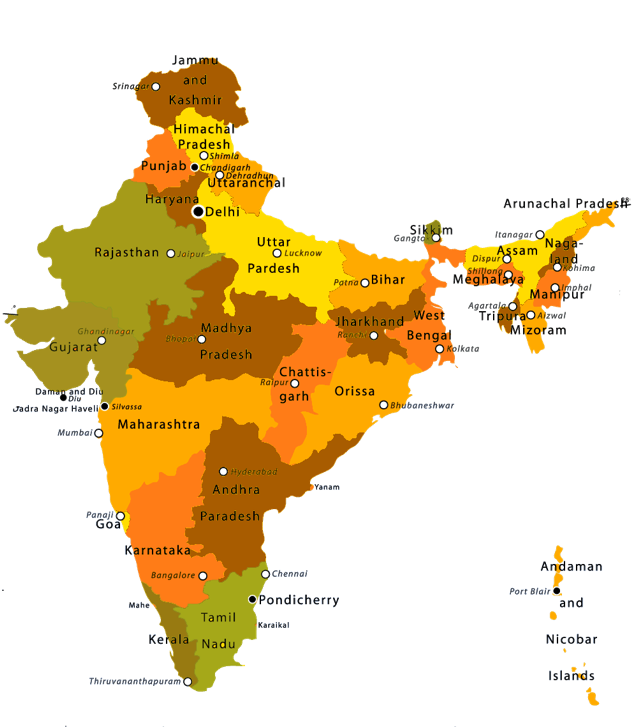
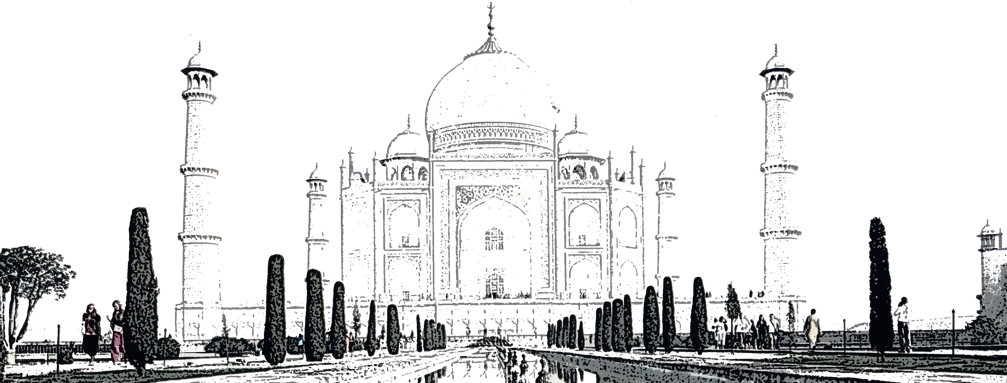
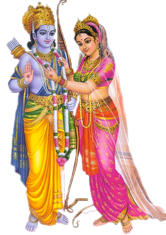

India
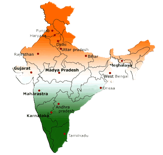
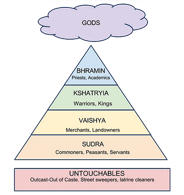
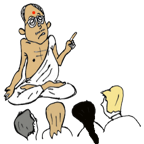
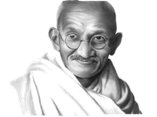
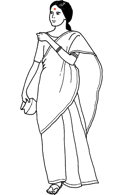

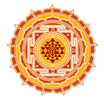




अहिंसा
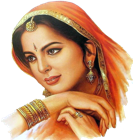
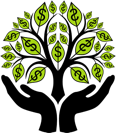



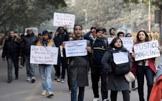
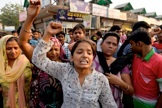










Reshma Qereshi
